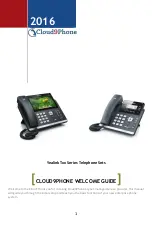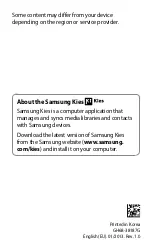
Section 15
102
Knowing Performance and Safety Guidelines
Two other studies of interest have been reported recently in the literature:
1.) Two groups of 18 people were exposed to simulated mobile phone signals under
laboratory conditions while they performed cognitive function tests. There were no
changes in the subjects' ability to recall words, numbers, or pictures, or in their
spatial memory, but they were able to make choices more quickly in one visual test
when they were exposed to simulated mobile phone signals. This was the only change
noted among more than 20 variables compared.
2.) In a study of 209 brain tumor cases and 425 matched controls, there was no
increased risk of brain tumors associated with mobile phone use. When tumors did
exist in certain locations, however, they were more likely to be on the side of the head
where the mobile phone was used. Because this occurred in only a small number of
cases, the increased likelihood was too small to be statistically significant.
In summary, we do not have enough information at this point to assure the public
that there are, or are not, any low incident health problems associated with use of
mobile phones. FDA continues to work with all parties, including other federal
agencies and industry, to assure that research is undertaken to provide the necessary
answers to the outstanding questions about the safety of mobile phones.
What is known about cases of human cancer that have been
reported in users of hand-held mobile phones?
Some people who have used mobile phones have been diagnosed with brain cancer.
But it is important to understand that this type of cancer also occurs among people
who have not used mobile phones. In fact, brain cancer occurs in the U.S. population
at a rate of about 6 new cases per 100,000 people each year. At that rate, assuming 80
million users of mobile phones (a number increasing at a rate of about 1 million per
month), about 4800 cases of brain cancer would be expected each year among those
80 million people, whether or not they used their phones. Thus it is not possible to tell
whether any individual's cancer arose because of the phone, or whether it would have
happened anyway. A key question is whether the risk of getting a particular form of
cancer is greater among people who use mobile phones than among the rest of the
population. One way to answer that question is to compare the usage of mobile
phones among people with brain cancer with the use of mobile phones among
appropriately matched people without brain cancer. This is called a case-control
study. The current case-control study of brain cancers by the National Cancer
Institute, as well as the follow-up research to be sponsored by industry, will begin to
generate this type of information.
What is FDA’s role concerning the safety of mobile phones?
Under the law, FDA does not review the safety of radiation-emitting consumer
products such as mobile phones before marketing, as it does with new drugs or
medical devices. However, the agency has authority to take action if mobile phones
are shown to emit radiation at a level that is hazardous to the user. In such a case,
FDA could require the manufacturers of mobile phones to notify users of the health
hazard and to repair, replace or recall the phones so that the hazard no longer exists.
Содержание 2345
Страница 1: ...Sprint PCS The clear alternative to cellular SM ...
Страница 8: ......
Страница 10: ......
Страница 16: ...Section 2 8 Getting to Know Your Sprint PCS Phone 2 Getting to Know Your Sprint PCS Phone ...
Страница 40: ......
Страница 50: ......
Страница 58: ......
Страница 70: ......
Страница 74: ......
Страница 82: ......
Страница 90: ......
Страница 102: ......
Страница 128: ......
















































